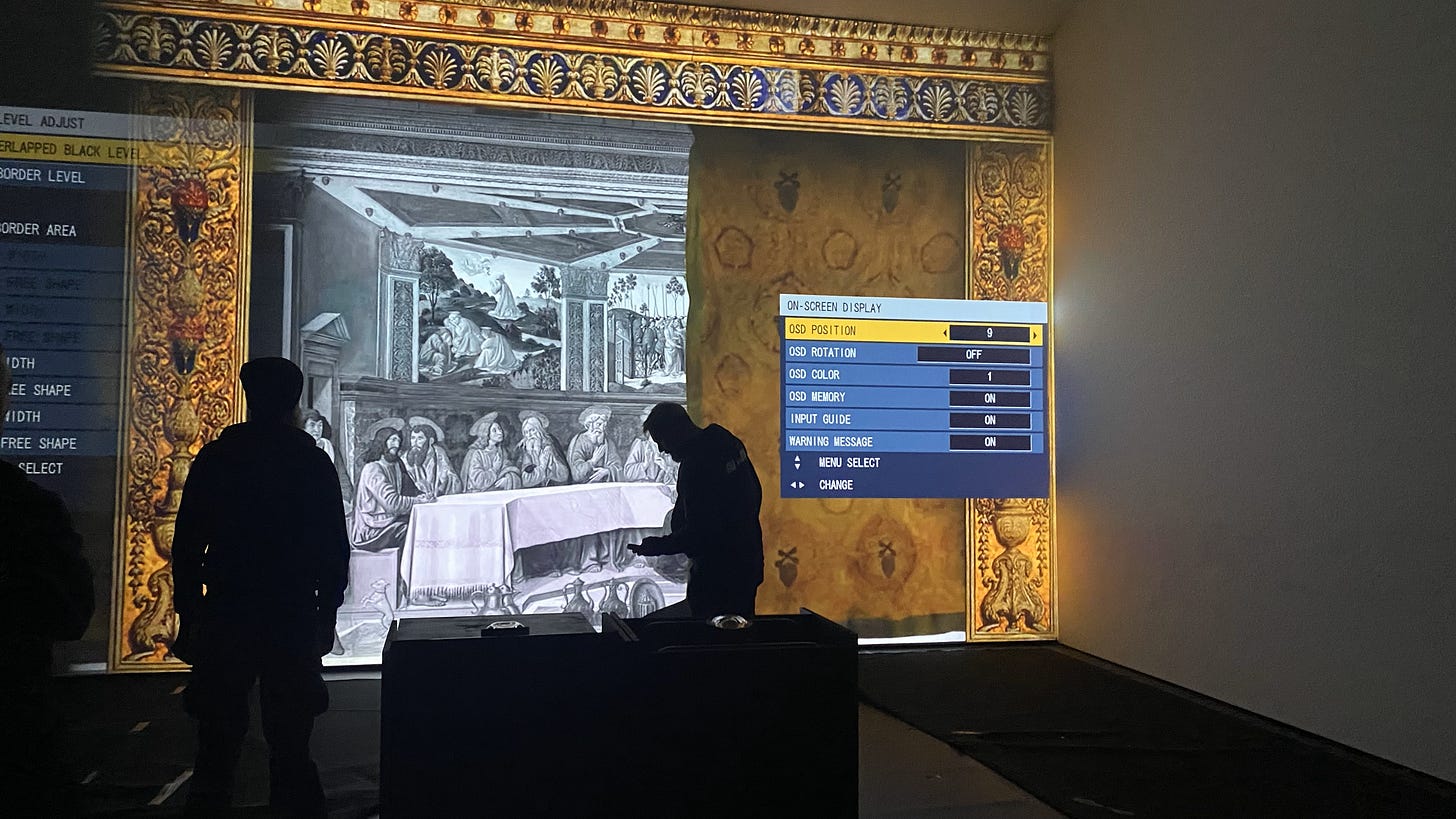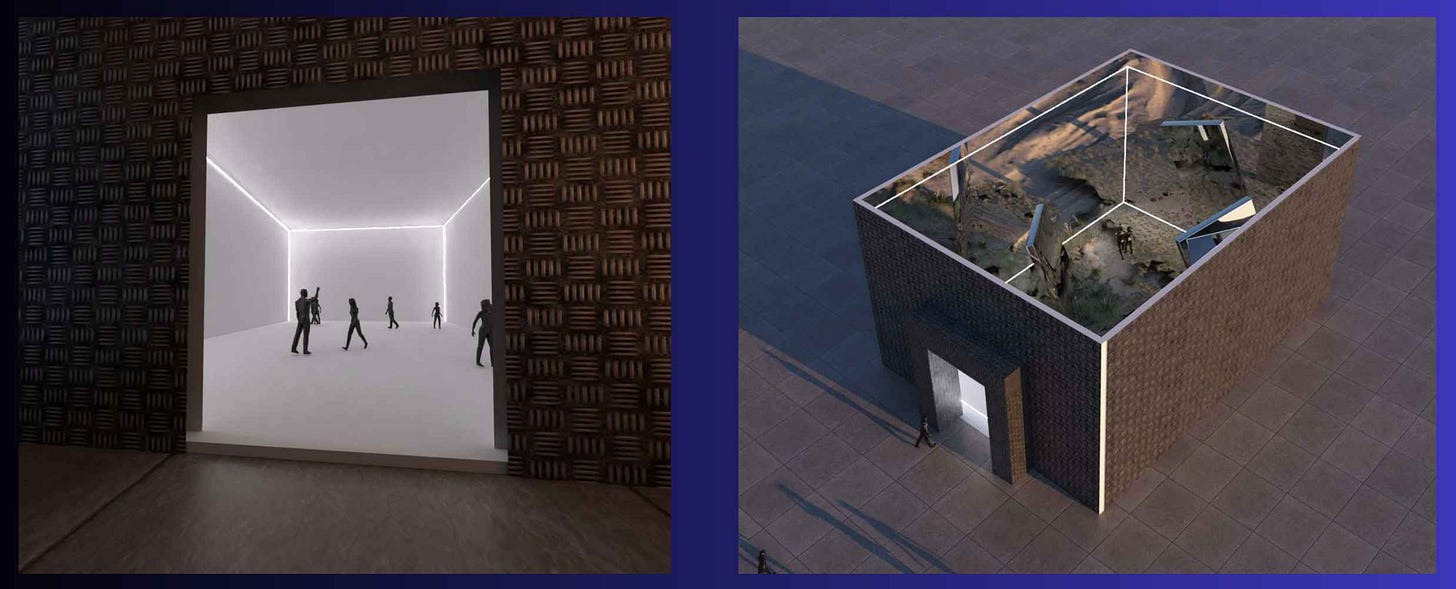Immersive spaces & theaters as anchor attractions
Immersive theaters are interactive environments where technology blends with architecture, creating captivating audio-visual story-telling experiences.
Immersive spaces or theaters are modern attractions becoming increasingly popular across various fields – from art and education to entertainment and marketing. By using advanced audiovisual technologies such as 360° projections, surround sound, interactive screens, and advanced lighting, they create environments that engage the audience’s senses, transporting them into a completely new reality.
What are immersive spaces?
Immersive theaters are interactive environments where technology blends with architecture, creating captivating audiovisual experiences. With projections on walls, ceilings, and even floors alongside spatial audio, the audience becomes an active participant in the events rather than just a passive observer. This solution revolutionizes how we experience art, education, and marketing, opening up new possibilities for interaction.
How can immersive theaters be incorporated into new and existing buildings?
Technological advancements are making creating immersive spaces in new and existing buildings easier. Whether it’s a modern museum complex, office building, shopping gallery, or historical site, immersive spaces can be seamlessly integrated, offering users a new quality of experience. Be an excellent anchor attraction.
Modern complexes
Modern buildings, especially those designed for cultural, educational, or commercial purposes, are often conceived with the integration of advanced multimedia technologies in mind. Immersive spaces can become an integral part of this infrastructure. Multipurpose venues can gain new dimensions through immersive theaters, and art galleries can present works that pull the viewer into the artistic narrative.
Renovations and existing buildings
Immersive theaters can be installed in existing buildings, whether historical or modern, without altering the original structure. Audiovisual systems can be integrated into the architecture, and solutions such as projections or interactive lighting can be customized to the conditions of the specific space. Especially in cultural venues like museums or art centers, such spaces can breathe new life into classical exhibitions, attracting new visitors.
Public spaces
Immersive theaters will be increasingly found in public areas such as parks, plazas, or multipurpose hubs. Multimedia-artistic installations can be woven into the urban landscape, creating interactive experiences accessible to a broad audience. These projects can also serve educational or promotional purposes, engaging residents and tourists in new forms of communication.
Commercial spaces
Immersive spaces have immense potential in marketing and retail. Shopping galleries, flagship stores, and hotels or restaurants can use immersive technology to create unique customer experiences. Multimedia spaces like these can strengthen brand image, create interactive promotional campaigns, and foster customer loyalty through unforgettable shopping experiences.
Content
A critical factor in immersive theaters is the continuous supply of new content. Unlike traditional cinema, where films are replaced based on frequent schedules, immersive environments can bring new stories without frequent changes. This flexibility allows for updates, encouraging visitors to return for fresh experiences. Venues can maintain high engagement content for weeks or months and visitor loyalty, making the space a dynamic destination for entertainment and education.
Benefits of immersive spaces
Immersive theaters offer many benefits for buildings that integrate them.
Primarily, they provide:
A new level of audience engagement: Immersive theaters engage audiences in ways traditional cinemas cannot.
Flexibility in adaptation: Modern multimedia immersive systems can be easily tailored to different technical and aesthetic spaces.
Increased venue attractiveness: Immersive spaces draw attention and can significantly boost visitor numbers in museums, shopping centers, or hotels.
The challenge of customizing content for different spaces
One of the critical challenges in designing immersive spaces is that each venue is unique in terms of architecture, layout, and technology. This variability makes creating content that can seamlessly adapt across multiple spaces difficult. Without unifying formats, ensuring that immersive experiences maintain the same level of engagement and quality in different environments becomes a complex task. Tailoring content for each space requires technical expertise and creative flexibility to adjust to various configurations and technologies.
Immersive technology behind
With the advancement of audiovisual technologies and growing interest in interactive experiences, immersive spaces are becoming a key element in modern architecture and interior design. In the coming years, we can expect more venues – from museums to offices to public spaces – to adopt such solutions, creating new and exciting ways of interacting with audiences.
How to take the next step if you consider having an Immersive space:
The Cube format offers an ideal solution for venue owners who want to avoid the complexities of custom immersive space planning. It is not just an immersive environment but also a versatile content platform.
The Cube standardizes the space, providing a ready-made setup with projections on all surfaces, allowing users to focus on creativity rather than logistics. Whether for performances or installations, content can be easily uploaded and scaled across multiple locations, ensuring a seamless and impactful experience every time.
For those seeking a fully customized immersive space, it's crucial to have an experienced team of experts to design and build it properly. Custom immersive environments require precise planning, integration of advanced audiovisual technologies, and tailored solutions to match the specific architecture and goals of the venue.
This ensures the space delivers a truly unique and impactful experience while addressing the technical and creative complexities.
You may be interested to read:
Have you ever been on a backstage tour?
Premiere issue of Entertainment Technology
Immersive Installation in your venue
Immersive exhibition Sistine Chapel







